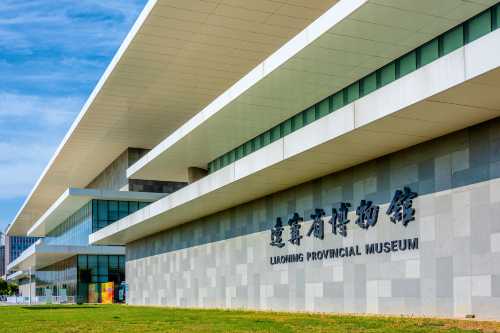App
Customer Support
Find Bookings
Popular Trip Moments
Zhongshan Road "European Style Street" – Shenyang's "Wukang Road" | Headed straight here after landing!! So photogenic | Shenshui Bay, A Romantic Encounter with Lilies | My mom said this is the most satisfying hotel she's ever stayed in! | Shenyang | Travel through three hundred years and touch the deepest time code of Northeast China | Walking Through History: A Day at Shenyang Imperial Palace | Shenyang: Echoes of Empire in a Modern Metropolis | 🌟Le Méridien Shenyang Heping Hotel Review, Shenyang, China🌟 | 3-Day 2-Night In-Depth Shenyang Travel Guide | One Route to Eat & Explore Northeast China's CBD | Shenyang 3-Day 2-Night Budget Slow-Paced Travel | Hidden Gem in Wan Chai: High-Quality Retro Japanese Izakaya|Showa Shokudo (Wan Chai) | Shenyang Travel Guide | Shenyang Journey | Encounter of RARITY Holz Hotel and Cultural Heritage | Shenyang: Where the Qing Dynasty Began and Russian Romance Lingers | The Rustic Charm of Northeastern Cuisine|Hong Yingtao Shengjing Restaurant | Dongling Country Park: A Perfect Spot for Autumn Outings with Kids | Shenyang | Dongling Country Park, the single-digit ticket price is quite worth it | Photography|Summer at Shenyang Dongling Country Park | Shenyang's best food and photography | Shenyang! It's like stepping into a fairytale wonderland for amazing photos! | Shenyang | The Perfect Hotel for a Girls' Trip - This "Chill Guide" Has Everyone Asking | Shenyang's Top 1 Water Play Destination for Weekend Family Fun | Shenyang Low-Altitude Sightseeing Trial Flight Succeeds | Can you take me to Shenyang? | Summer Vacation in Shenyang|A "Kid-Friendly" Homestay Hidden Above Mixc Shopping Mall! | July in Shenyang | A Summer Like Hayao Miyazaki's Fairy Tale | Shenyang Rice Dream Space Travel Guide | Instantly transported to Santorini!! | Currently, this place is top-notch for beef dishes and meals | Shenyang Imperial Palace|Wilder than Beijing's Forbidden City? The Secret History of Guānwài Revealed!
Recommended Attractions at Popular Destinations
Popular Attractions in Bangkok | Popular Attractions in Manila | Popular Attractions in Tokyo | Popular Attractions in Taipei | Popular Attractions in Hong Kong | Popular Attractions in Seoul | Popular Attractions in Kuala Lumpur | Popular Attractions in Los Angeles | Popular Attractions in Shanghai | Popular Attractions in New York | Popular Attractions in Shenzhen | Popular Attractions in Osaka | Popular Attractions in Singapore | Popular Attractions in London | Popular Attractions in Guangzhou | Popular Attractions in San Francisco | Popular Attractions in Beijing | Popular Attractions in Macau | Popular Attractions in Bali | Popular Attractions in Jakarta | Popular Attractions in Paris | Popular Attractions in Ho Chi Minh City | Popular Attractions in Istanbul | Popular Attractions in Phuket | Popular Attractions in Chicago | Popular Attractions in Seattle | Popular Attractions in Toronto | Popular Attractions in Orlando | Popular Attractions in Cebu | Popular Attractions in Chiang Mai
Popular Restaurants in Shenyang
FENG TIAN RESTAURANT | Han Ba Wei De | YU MANSION | 沈阳新世界酒店·公社 | 艾美酒店新食谱西餐厅 | Grand Hyatt Shenyang Xin Feng Tian | Xinhongji Lijiu Restaurant | Shang Ju XinPai Japanese Restaurant | BADAWAN | Han Sheng DIY Barbeque (Joy City) | Handu Hakuro's Shop ( Jin Rong Centre ) | Dashu Restaurant (taiyuanjiewanda) | 枣玛露脊骨汤·烤肉(西塔总店) | 沈阳君悦酒店·大堂酒廊 | 蜀渝老爹重庆火锅(中街店) | Hilton Shenyang Mukden Chinese Restaurant | Haidilao Hot Pot (Joy City) | 熊喵来了火锅(中街大悦城B馆创始店) | DONGBEI MAN YUAN | Fu Jie Shi Shang Coarse Grains (Heng Long) | The Secret Island | Lan Qiao Bei En Bakery (FTC Jin Rong ) | Cafe Liao | Little Pig Little Boeuf | Fei Fei BBQ ( Tie Xi ) | 大舜火锅·鲜切牛肉(临波路店) | Songmingyikaorouguan | Tao Heung | 陈火锅古韵风(长白店) | Shu Jiu Xiang ( Wen Yi Road )
Popular Ranked Lists
Popular Premium Hotels in Geisenheim | Popular Best Things to Do in Taishan | Popular Premium Hotels in Sioux City | Popular Luxury Hotels in Piedmont | Top 20 Luxury Hotels near Goyang-si | Popular Premium Hotels in Tours | Top 50 Must-Visit Restaurants in Barcelona | Popular Premium Hotels in Pasadena | Top 50 Must-Visit Restaurants in Macau | Popular Premium Hotels in Bangka Belitung Islands | Popular Premium Hotels in Aegina | Top 50 Must-Visit Restaurants in Munich | Top 50 Must-Visit Restaurants in Milan | Top 50 Must-Visit Restaurants in Xi'an | Top 50 Must-Visit Restaurants in Beijing | Popular Best Things to Do in Hotan Prefecture | Popular Premium Hotels in Vaduz | Popular Best Things to Do in Hami | Top 10 Best Things to Do in Yi County | Top 10 Luxury Hotels near Apollo Bay | Top 50 Must-Visit Restaurants in Athens | Popular Premium Hotels in Dong Nai Province | Popular Premium Hotels in Shan | Popular Best Things to Do in Cixi | Popular Premium Hotels in Bad Laasphe | Popular Best Things to Do in Ankang | Popular Premium Hotels in Bujumbura Mairie | Top 50 Must-Visit Restaurants in Yangzhou | Top 50 Must-Visit Restaurants in Dalat | Popular Best Things to Do in Daqing
About
Payment Methods
Our Partners
Copyright © 2025 Trip.com Travel Singapore Pte. Ltd. All rights reserved
Site Operator: Trip.com Travel Singapore Pte. Ltd.
Site Operator: Trip.com Travel Singapore Pte. Ltd.





































